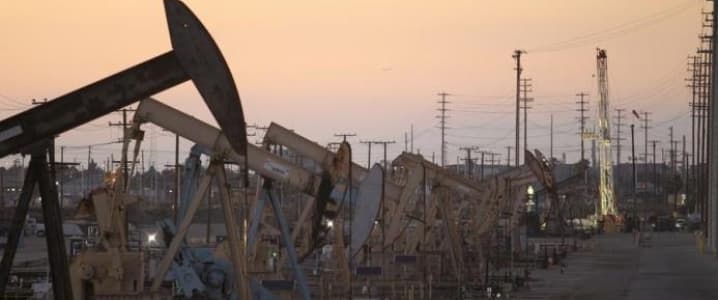Despite the recovery of the U.S. oil patch in recent months, the crude oil price crash in 2015 and 2016 has hit the economies of the energy producing states.
Six of the top eight oil-pumping U.S. states slipped into recession last year, S&P Global Ratings said in a report on Tuesday.
Alaska, Louisiana, New Mexico, North Dakota, Oklahoma, and Wyoming saw their economies shrink in 2016, while Texas and Montana had GDP growth much smaller than in 2015, estimates in the report show.
“The sharp pullback in exploration and production during the past 18 months has inflicted considerable damage on the economies of the oil producing states,” S&P’s analysts said.
In addition, lowered oil production has hit employment levels in all 8 states except Texas, and the seven top oil-producing states except the Lone Star State ranked in the bottom 10 in the U.S. in terms of change in total nonfarm employment last year.
North Dakota was particularly badly hit, with GDP shrinking from the fastest-growing rate in the U.S. in 2014 at 6.74 percent, to the sharpest contraction in 2015 - 2.65 percent - and an estimated 8.38 percent slump for 2016, again the steepest drop in the U.S.
North Dakota’s Revised Executive Budget Recommendation for 2017-2019 takes a more conservative approach toward oil, assuming US$337 million less in oil tax revenue and an average oil price of around US$48 per barrel, compared with US$52-53 per barrel in the previous governor’s budget. The state’s oil production assumption was left unchanged at 900,000 bpd. Related: Is Libya A Bigger Threat To Oil Prices Than U.S. Shale?
Alaska’s economy has been shrinking every year since 2013-2014, S&P figures show. Governor Bill Walker said in The State of the State Address last week that revenues were down more than 80 percent from what they were four years ago. The budget has been cut by 44 percent over the period, but Alaska still faces a US$3-billion fiscal gap. Still, “new oil discoveries have the potential to stem the downturn in production”, Gov. Walker said, noting that oil output is currently around 500,000 bpd. However, Alaska needs oil prices at over US$100 per barrel in order to solve its fiscal problem, the governor said.
This estimate matches S&P’s view that oil prices need to be US$100-110 in order to finance the proposed US$4.3 billion in general fund expenditures.
But oil prices at that level are nowhere in sight.
After having grown by 1.4 percent in 2014 and by 0.95 percent in 2015, Louisiana’s GDP is expected to have contracted by 0.81 percent in 2016, S&P’s report says. New Mexico and Oklahoma’s economies offer a similar picture: after growth in 2014 and 2015, their respective GDP is projected to have shrunk in 2016.
Wyoming’s economy – which had grown in 2013-2014 – is now seen to have contracted by a massive 6.33 percent last year, after a 0.1 percent drop in 2015.
Texas and Montana continue to be spared from recession, although their economies grew at a much slower pace than in the two previous years.
Texas - the U.S. state with the second-fastest GDP growth in 2014 and 2015 – saw its economy grow by 0.3 percent last year, S&P estimates. Texas is the only one of the 8 top energy-producing states ranked AAA by S&P. Related: Italian Olive Groves vs Multi-Billion Dollar Pipeline
Even with the much lower economic growth, Texas has limited direct reliance on oil and gas production taxes on general operations. It has a diversified economy, and a significant US$10.3-billion rainy-day fund. All these components have helped the state to weather the oil downturn and position it well to manage budget pressures, according to S&P.
ADVERTISEMENT
As bad as it was last year for most of the oil states’ economies, signs of recovery have started to emerge in recent months, especially in Texas and Oklahoma. Oil prices recovering from early-2016-lows to above US$50 are encouraging more and more drillers to put rigs back to work across the U.S.
According to S&P, oil prices appear to have hit the bottom and stabilized to a certain extent. Although increased shale production would effectively cap prices at US$60, the good news for the U.S. energy states is that the OPEC deal implies a floor at around US$50, at least temporarily. This would lead to oil-producing states “leveling off economic performance”, although S&P anticipates any economic recovery to be modest, due to the limited upside potential for oil prices to rise above US$60.
Still, it seems that the U.S. energy states have left the worst of the oil price crash behind.
By Tsvetana Paraskova for Oilprice.com
More Top Reads From Oilprice.com:
- Cash Strapped Iranian Oil Industry Braces For Trump Impact
- Keystone XL Still Faces Obstacles Even With Trump’s Approval
- Why Russia Beat Saudi Arabia As China’s No.1 Oil Supplier


















